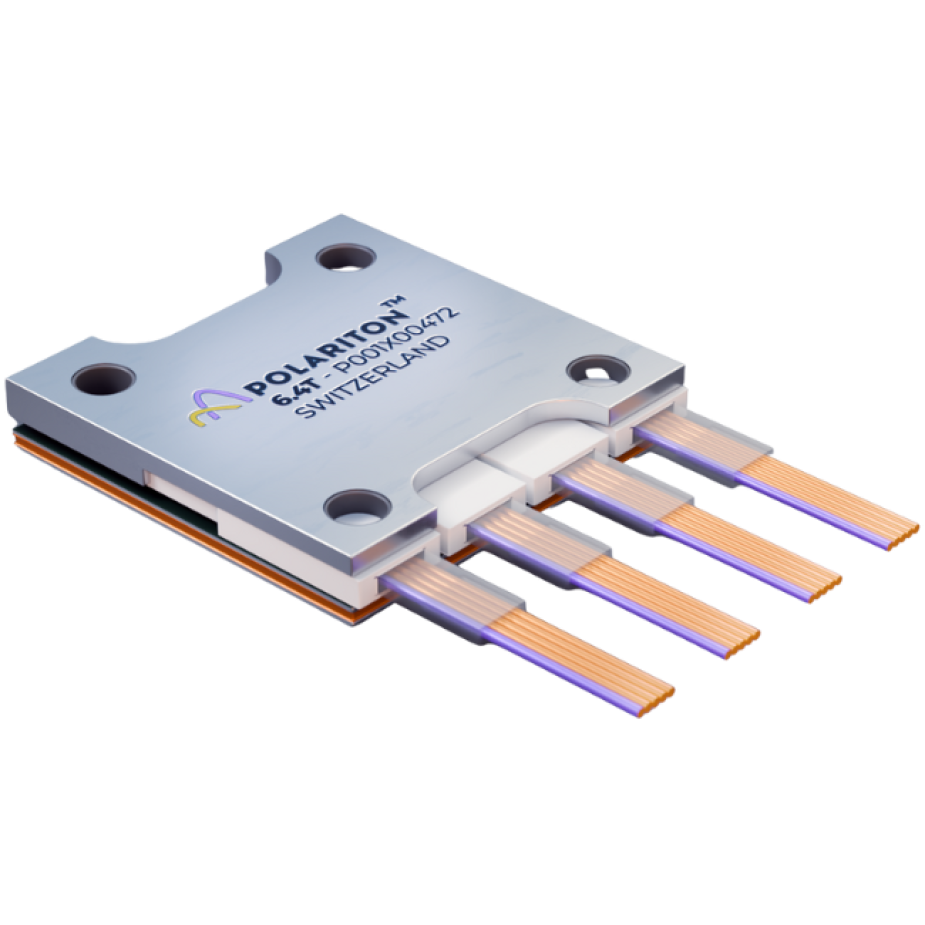6.4T+ Optical Engine for CPO
TOE-400G Tx Optical Engine
This visionary product leaps the market with unprecedented performance and bandwidth. This transmit optical engine supports up to four plugged optical receptacles, each capable of accommodating 4 lanes, for a total of 16 lanes and 6.4T data transmission in fingertip size package. This provides industry’s leading channel density for demanding OBO, LPO and CPO. An optimized integrated driver RF performance through refined signal paths, lower drive voltages and demands less electrical power per transmitted bit.
Key Features
-

145 GHz EO Bandwidth
-

4, 8, 12 or 16 lanes
-
 Optical output power up to 4 dBm
Optical output power up to 4 dBm -

0.5 pJ/bit (driver and EOM)
Description
The TOE-400G transmit engine for co-packaged optics (CPO) delivers industry-leading integration and ultra-high channel density with support for 16 and 32 lanes, making it ideal for next-generation data center and AI workloads.
With tightly integrated drivers and modulators, the Optical Engine for CPO is optimized for minimal signal path length, enhanced RF performance, and reduced drive voltages—enabling both a smaller form factor and superior signal fidelity. Its cutting-edge architecture achieves energy efficiency below 0.5 pJ/bit by eliminating static currents and electrode bias, relying instead on a purely capacitive load with a clear roadmap for further reductions.
Designed for uncompromising reliability, the engine achieves a bit error rate as low as 1E-6, delivering excellent signal integrity and clean eye diagrams for high-performance optical interconnects.
Related Papers
Leader in Power Reduction
Plasmonic lumped devices have optimized RF characteristics that make the driver consume less switching power. It’s actually a benefit that comes with the unprecedented speed of plasmonic circuits. In a first step we are pushing below 0.5 pJ/bit (including DRV and EOM power dissipation). Then we will half this again every year thanks to architecture improvements.
Differentiating by Signal Integrity
Driver integration and control of the RF properties of the CPO component provides a game changer for the industry. The result is cleaner RF signal propagation and better transfer to the optical domain, better eye diagrams and lower bit error rate (BER).
Form Factor Advantage
The application benefits either from more lanes per area, smaller optical engines, and higher data throughput. The power density is not increased, since plasmonic circuits consume overall less power than alternatives.
CMOS Compatibility
Simplifies integration with existing semiconductor manufacturing processes, reducing production costs, enhancing scalability, and enabling integration of logic and the optical engine.
Performance Specifications
| 3.2T | 6.4T | 12.8T | |
| Peak wavelength | 1310 nm | 1310 nm | 1310 nm |
| Number of lanes | 8 (2 receptables used) | 16 (4 receptables used) | 32 (coming soon) |
| Power dissipation (driver+EOM+ control electronics) | 0.5 pJ/bit = 1.6 W (8 lanes) | 0.5 pJ/bit = 3.2 W (16 lanes) | 0.5 pJ/bit = 6.4 W (32 lanes) |
| Optical input power per receptable | 19 dBm | 19 dBm | tbd |
| Optical output power per lane (AOP) | -0.9 ... 4 dBm | -0.9 ... 4 dBm | -0.9 ... 4 dBm |
| Optical modulation amplitude (OMA) | 1.2 ... 4.2 dBm | 1.2 ... 4.2 dBm | 1.2 ... 4.2 dBm |
| Dynamic extinction ratio (dER) | >4 dB | >4 dB | >4 dB |
| TDECQ | <3.4 dB | <3.4 dB | <3.4 dB |
| Bit error rate (BER) | <1E-6 | <1E-6 | <1E-6 |


